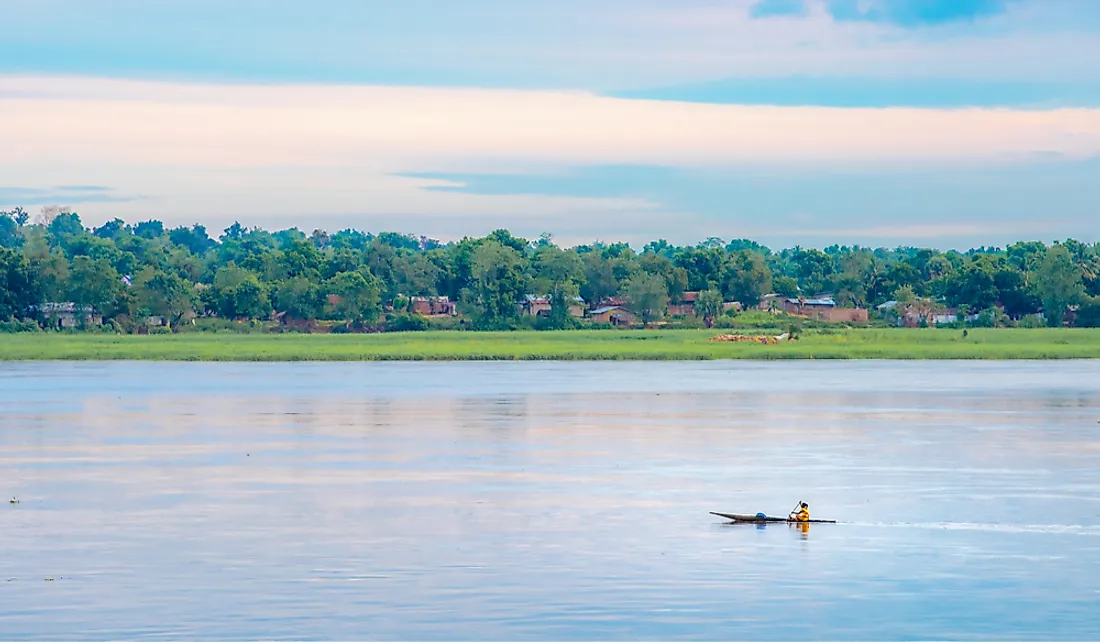What Are The Biggest Industries In The Central African Republic?

Central African Republic (CAR) is a landlocked nation found in Central Africa. The country’s capital, as well as the largest city, is Bangui. The CAR covers a land area of about 240,000 square miles with a total population of 4.6 million. Despite many interventions by the UN peacekeeping forces including two peace treaties in 2007 and 2012, the country has been in civil war since 2012. CAR is listed among the poorest countries in the world in spite of being rich in mineral resources. The current GDP of CAR is USD 2.003 billion with a per capita income of $400 which is among the lowest worldwide. The biggest industries in CAR are agriculture and mining.
Agriculture
Agriculture is the predominant industry in CAR as it contributes to 50% of the GDP. It is also responsible for the employment of over 70% of the workforce. However, most of the agricultural activities in CAR target subsistence farming of food crops rather than cash crops. The reason for this is that most of the Central Africans depend on farming for their livelihoods. Crop cultivation is done by both men and women. While the men are responsible for clearing farms, the women engage in the cultivation of the farms. The focus on food crops farming has resulted in the country being self-sufficient with regards to food safety. Sometimes the country produces surplus foodstuff which it exports to other nations.
The primary food crops grown include millet, squashes, sesame, peanuts, yams, rice, sorghum, plantains, cassava, and maize. Every year, the total production of cassava which is the staple food in CAR ranges from 200,000-300,000 tons. On the other hand, the principal cash crops cultivated in CAR are cotton, coffee, and tobacco. The production of coffee and cotton was introduced in CAR by the French who owned large plantations. Cotton produced every year is between 25,000 and 45,000 tons. Most recently, the government has been encouraging the growth of sugarcane, oil palms, and vegetables for export.
Livestock
Besides crop cultivation, CAR farmers also practice animal farming of sheep, poultry, cattle, pigs and goats. However, the country has a challenge with this kind of farming due to the presence of tsetse fly in most regions.
Timber Industry
Timber accounts for approximately 16% of CAR’s export earnings. Most of the forests that grow in the country are in the south; bordering the DRC. The government of CAR encourages the locals to be involved in the production of veneer and plywood.
Fishing
Most of the fishing done in CAR takes place along the rivers since it is a landlocked nation. Pond-raised tilapia and the river fish basically act as sources of proteins in the country.
Mining
Diamond accounts for 40% of the total exports trade in CAR. Other mineral deposits in the country include gold, uranium, iron ore, copper, and manganese. Most recently, CAR has been seeking ways of protecting its natural resources since most mining deposits are located within the high biodiversity area.
Effect of the International Community on the economy of CAR
The International Monetary Fund has been putting pressure on the governments of CAR to provide incentives for timber and agricultural industry, reduce government expenditure, and have a more open investment policy. In the 1990s, the IMF demand for the devaluing of CAR’s currency and privatization of business (especially those of the banking and petroleum distribution sectors). The reduction of France’s support to its former colonies has led to a significant deterioration of CAR’s economy. Other factors that have led to the poor economy of the country include mismanagement of government funds, political unrest, and corruption.











